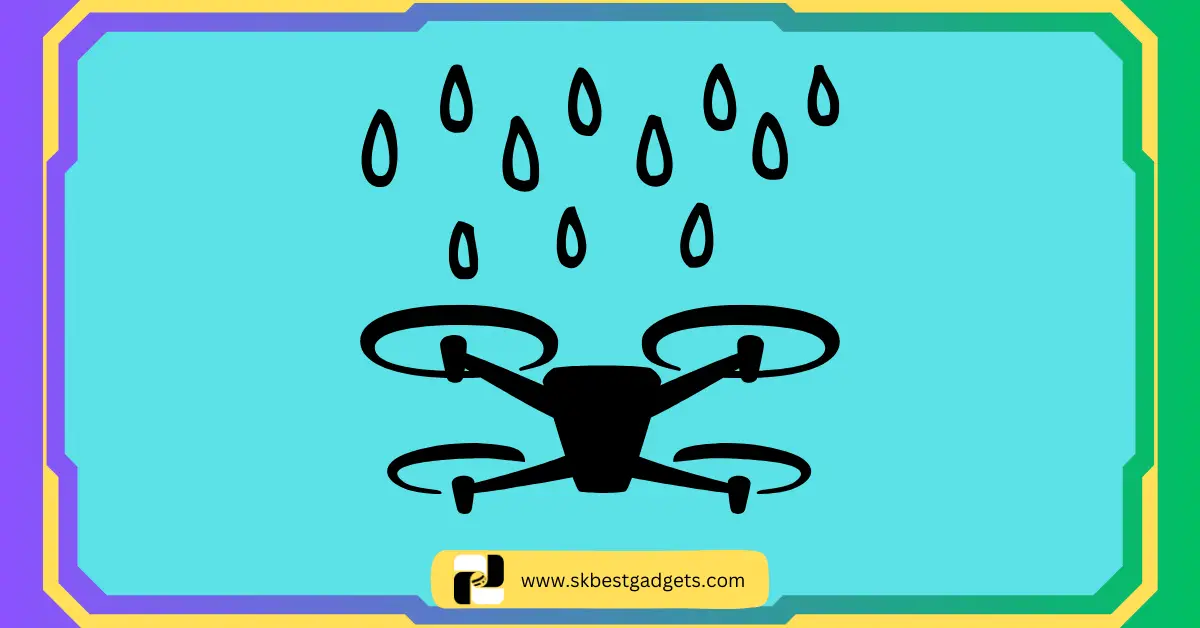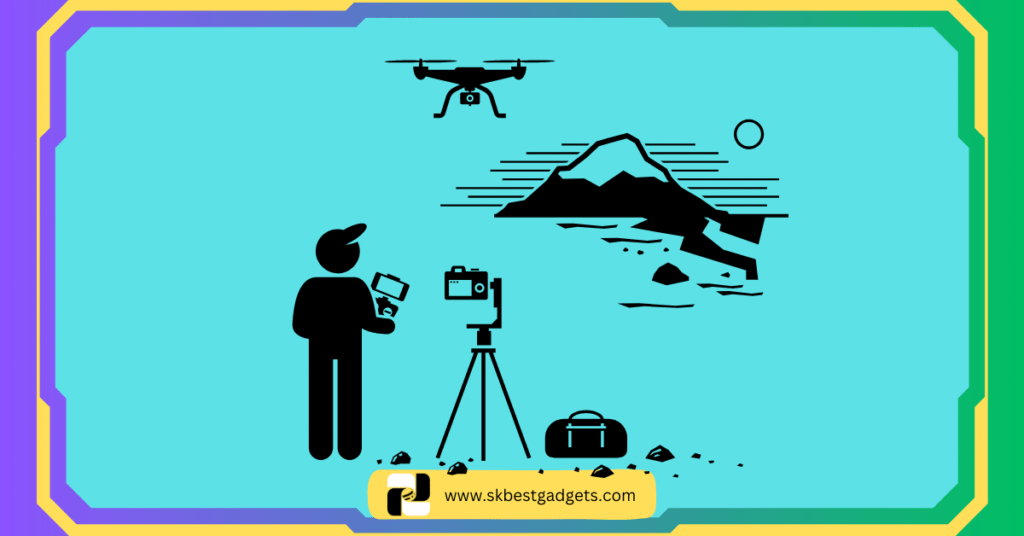What To Do If Your Drone Gets Wet? (Drone Secrets)

Drones are amazing flying machines; however, they can be susceptible to water damage. In case your drone becomes wet, you should act quickly to prevent any further damage.
In this article, I will guide you through the steps for addressing a wet drone, which includes identifying the most vulnerable components, drying it effectively, and implementing measures to prevent water damage in the future.
Key Takeaways
- If your drone gets wet, you should take quick action to prevent any potential damage.
- Remove batteries and inspect for water damage carefully.
- Safely dry the drone’s exterior and consider disassembling it if needed.
- Use a desiccant to absorb the remaining moisture for thorough drying.
- To achieve optimal results, it is essential to prioritize patience during the recovery process.
- Consider DJI Care Refresh for potential water damage coverage.
- If your drone still malfunctions after drying, it’s advisable to seek professional help.
- Avoid flying drones over water to prevent water-related risks.
- Water can interfere with radio signals, causing signal loss.
- To ensure your safety, exercise caution and prioritize safety when flying over water.
What to do if your drone gets wet and what parts are most at risk?
I will inform you about the steps you should take if your drone gets wet and which parts are most vulnerable to damage.
The things you can do if your drone gets wet:
Stay Calm: To begin with, the first and most crucial step is to remain calm. Furthermore, panicking will only exacerbate the situation.
Remove the Batteries: Moving on, your drone’s batteries are both vital and susceptible to water damage. Therefore, quickly remove them to prevent potential short-circuiting.
Inspect for Damage: Subsequently, after taking out the batteries, carefully examine your drone for any signs of water damage. Look for condensation, water droplets, or other indicators of moisture intrusion.
Dry the Drone: If there’s water on the exterior, use a soft cloth to gently dry it off. Additionally, you can also use a hair dryer on the cool setting to expedite the drying process.
Disassemble if Necessary: In case you spot any signs of water damage inside the drone, you may need to disassemble it to dry individual components. However, be cautious not to harm any delicate parts during this process.
Use a Desiccant: Following disassembly, put the drone in a sealed container along with a desiccant pack. This will help absorb any remaining moisture.
Wait for Complete Drying: Lastly, allow the drone to dry thoroughly. Once dry, reassemble it and test it to ensure it’s functioning correctly.

The components most vulnerable to water damage in a drone are the electronics, motors, batteries. Electronics are sensitive and easily harmed by water, while motors are relatively more resilient. Normally, a waterproof case protects the battery.
Tips to prevent water damage and what to do if your drone gets wet:
- Avoid Wet Conditions: Refrain from flying your drone in wet weather conditions.
- Thoroughly Dry After Use: If you do fly in damp conditions, ensure a thorough drying session for your drone afterward.
- Stay Away from Water: Keep a safe distance from water bodies while flying your drone.
- Immediate Action if Submerged: If your drone accidentally goes into water, promptly remove the batteries and dry it as soon as possible.
- Proper Storage: Store your drone in a cool, dry environment.
Read More: https://skbestgadgets.com/can-you-fly-a-drone-on-the-blue-ridge-parkway/
By following these guidelines, you can protect your drone from water damage, prolonging its lifespan and ensuring its continued functionality.

What to do if your drone gets Wet by falling in the water body?
Let me give you the simple steps that you should take. Here are the steps you should take if your drone falls or lands in water:
Steps you need to take if your drone gets wet by falling in water:
1. Swift Retrieval: Your priority is to remove the drone from the water as quickly as possible. The longer it remains submerged, the higher the risk of water seeping into the electronics and causing damage.
2. Battery Disconnection: Immediately disconnect the drone’s battery. This step is crucial in preventing any additional electrical damage that could occur if power continues to flow through the wet components.
3. Propeller Removal: Take off the propellers. This action aids in drying the motors and prevents potential rusting. Ensuring the motors are moisture-free is essential for the drone’s future performance.

4. Drying Process: Begin the drying process for your drone. One effective method is to use a hair dryer in a cool setting, gently directing the airflow over and around the drone.
Alternatively, you can wrap the drone in a dry towel and place it in a warm area to allow the moisture to evaporate.
The most important steps:
5. Silica Gel Packets: Consider exposing your drone to silica gel packets, readily available at most hardware stores. These packets are excellent at absorbing moisture and can aid in the drying process.
6. Patience is Key: It’s essential to exercise patience during this recovery process. Even if your drone appears dry on the outside, there could still be residual moisture within the electronics. Rushing to fly the drone again while it’s not completely dry may lead to further damage.
7. DJI Care Refresh (If Applicable): If you own a DJI drone and have purchased DJI Care Refresh, you may have coverage for water damage. This subscription service offers protection against accidental damage, including situations like water damage.
Read More: Is DJI Mini 3 Pro waterproof?

Be sure to review the terms and conditions of your DJI Care Refresh plan for details on how to proceed in the event of water damage.
By following these steps carefully, you can increase the chances of saving your drone from water-related mishaps and potentially expedite its recovery process.
Read More: Are DJI drone waterproof?
Can a drone survive water damage?
Most consumer drones are not water-resistant and are susceptible to water damage. Water can harm various components of a drone, including the camera, motors, circuit board, and batteries, often resulting in electrical short circuits.
Some drones claim to be water-resistant, but they typically have limited resistance to light exposure to elements like rain or splashes. Submerging a water-resistant drone in water can still lead to significant water damage.
Read More: Can you fly a drone in the rain?
Steps to take if your drone gets wet:
If your drone becomes wet, swift action is crucial. Start by disconnecting the power supply immediately. Following this, dry the drone carefully using a hairdryer or wrap it in a cloth and place it in a container filled with raw rice.

The rice will aid in absorbing the moisture. Once the drone is thoroughly dried, attempt to turn it on to check for proper functionality.
However, if the drone still fails to operate correctly, you may need to seek professional help at a drone repair shop. The cost of repairing a water-damaged drone can vary depending on the extent of the damage, so be prepared for potential repair expenses.
Is it OK to fly drones over water?
Flying drones over water is generally not recommended due to several associated risks. These risks encompass:
Here are the risks:
Water Damage: One significant risk is water damage. Drones are not designed to be water-resistant, and even a minor water splash can harm the delicate electronics of the drone. In the unfortunate event that the drone falls into the water, it will likely suffer irreparable damage.
Loss of Signal: Water can interfere with the radio signal that connects the drone and the controller. Such interference can result in a loss of control over the drone, potentially causing it to either fly away uncontrollably or crash.
Read More: What to do if your drone crashes?

Wind and Waves: Strong winds and turbulent waves pose additional challenges when flying over water. These environmental factors can make it exceedingly difficult to maintain control of the drone, and they may even push the drone into the water against your intentions.
Collisions with Objects: Drones flying over water are at risk of colliding with boats, swimmers, or other objects present in the water. Such collisions not only jeopardize the safety of those in the vicinity but can also result in severe damage to the drone itself.
In light of these risks, it is crucial to exercise caution and prioritize safety when contemplating drone flights over water. Careful consideration of environmental conditions and the presence of potential hazards is essential to ensure a safe and incident-free flying experience.

Read More: Is Autel Evo 2 waterproof?
Important FAQs
It’s generally not recommended to fly your drone in any wet conditions, even light rain. Water can damage sensitive components, leading to potential malfunctions. It’s best to wait for dry weather to ensure your drone’s safety.
If your drone lands in the water, follow the steps mentioned in the article: Swift retrieval, battery disconnection, propeller removal, and thorough drying. Taking immediate action can increase the chances of saving your drone.
Yes, you can use a hair dryer in the cool setting to dry your drone. Ensure you gently direct the airflow over and around the drone to prevent overheating or damage.
Some drones claim to be water-resistant, but their resistance is usually limited to light exposure like rain or splashes. Submerging a water-resistant drone can still lead to significant water damage.
It’s essential to exercise patience during the drying process. Even if the drone appears dry on the outside, wait at least 24-48 hours before attempting to power it on to ensure that all moisture has evaporated.
DJI Care Refresh is a subscription service that offers protection against accidental damage, including water damage, for DJI drones. Review the terms and conditions of your plan for details on how to proceed in the event of water damage.
Yes, water damage can lead to permanent drone malfunctions. Water can harm sensitive electronics, motors, circuit boards, and batteries, often resulting in electrical short circuits.
Final Thoughts
To wrap it up, looking out for your drone and keeping it away from water is a must to keep it flying smoothly for the long haul.
Whether your drone accidentally takes a dip or you’re thinking about flying it near water, these tips we’ve laid out can be a game-changer in keeping those water-related hiccups at bay.
We hope you found this guide super helpful in safeguarding your drone. Do you have any burning questions or some cool stories to share? We’re all ears! Drop a comment below and let’s chat about how to ace the whole drone-water-dance.
And hey, if you think this article could be a lifesaver for your drone-loving pals, don’t hold back – spread the word! Together, we’ll make sure drone enthusiasts everywhere can soar the skies with less worry about water troubles.
Thanks a ton for hanging with us, and as always, remember: keep it dry, keep it fly!
What to Check Your Drone for Before a Flight? Discover the 3 Essential Drone Flight Checks!
Ready for a smooth drone flight? 🚁✈️ Don’t miss this article! Discover the 3 essential checks to make before taking off. Stay safe and soar high! 🌟🔍







